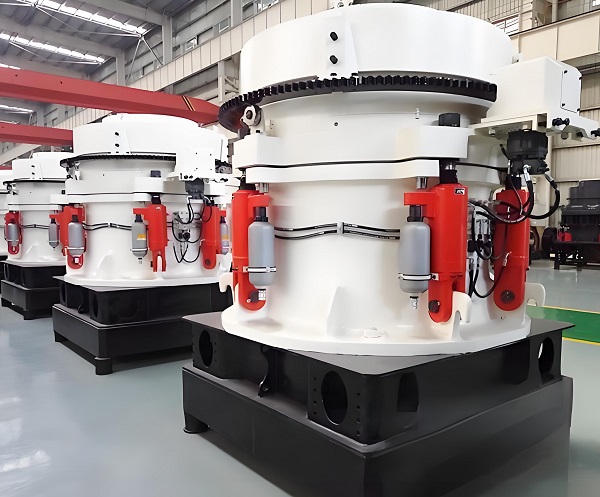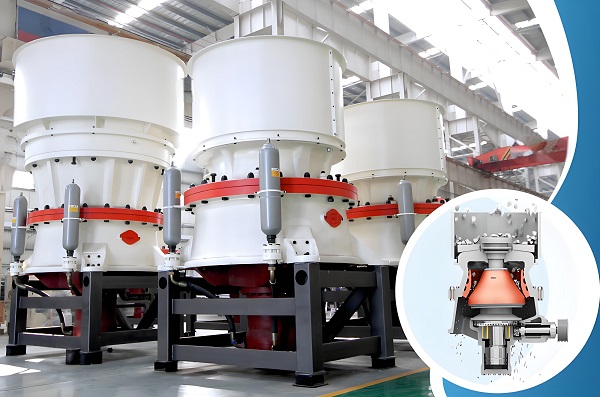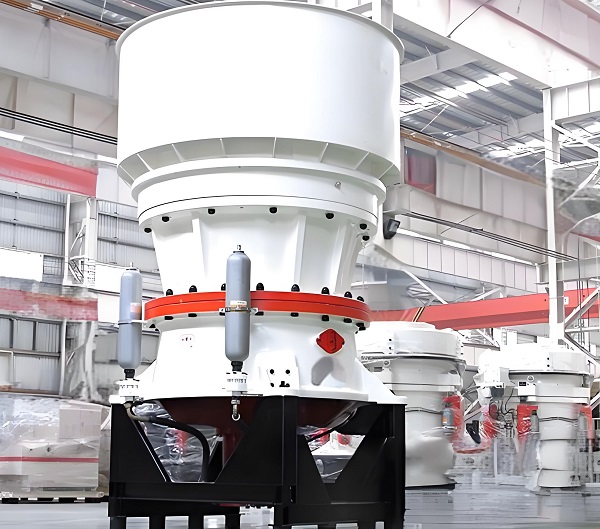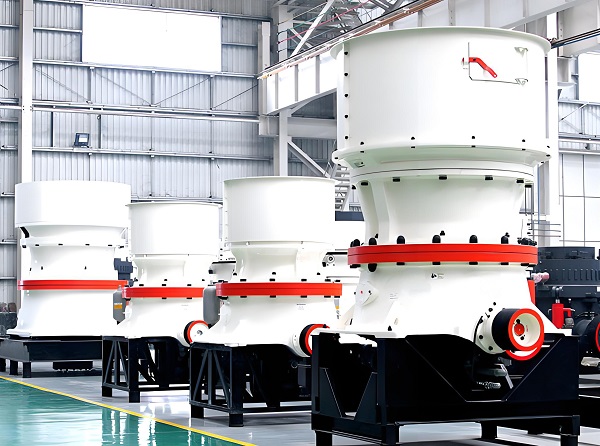Preface: Cone crusher is an efficient crushing equipment used for medium and fine crushing of various hardness rocks and ores. It is widely used in mining, metallurgy, construction and other industries. Its working principle is based on extrusion and bending to crush materials. The following is a detailed introduction to the role of cone crusher and its working principle:
A. The role of cone crusher

Cone Crusher
1. Medium and fine crushing: Cone crusher is mainly used to further crush materials that have been coarsely crushed to obtain smaller particle size products to meet the needs of different industrial applications.
2. Improve product quality: By accurately controlling the crushing ratio, it can ensure that the output material has a uniform particle size distribution and reduce the proportion of needle-like particles, thereby improving the quality of the final product.
3. Strong adaptability: It can handle a variety of hard materials, including but not limited to granite, basalt, iron ore, etc., suitable for different industry needs.
4. Reduce operating costs: Compared with other types of crushing equipment, cone crushers usually have a longer service life and are relatively simple to maintain, which helps to reduce the cost of long-term operation.
B.Working principle of cone crusher

Cone Crusher
The core components of cone crusher are moving cone (also called inner cone) and fixed cone (also called outer cone or frame). The moving cone is mounted on an eccentric shaft and driven by a motor to rotate around the main shaft. Its working process is as follows:
1. Feeding: The material enters the crushing chamber from above, located in the space between the moving cone and the fixed cone.
2. Extrusion crushing: When the moving cone rotates under the action of the eccentric shaft, it forms a gradually narrowing space on the side close to the fixed cone, namely the crushing zone. In this area, the material is crushed by pressure from both sides.
3. Bending crushing: In addition to the direct extrusion effect, the material will slip and roll in the crushing chamber due to the movement of the moving cone, generating additional bending stress, which further promotes the crushing of the material.

Cone Crusher
4. Discharge: The crushed material will gradually move downward with the rotation of the moving cone until it is discharged from the crusher through the discharge port at the bottom. During this process, smaller particles can be discharged first through the gaps on the crushing chamber wall, while larger particles continue to remain in the crushing area for further crushing until the required particle size is reached.
5. Adjust the size of the discharge port: In order to adapt to different production requirements, the width of the discharge port can be changed by adjusting the position of the moving cone, thereby affecting the particle size of the crushed product.

Cone Crusher
PS: The design of the cone crusher allows the operator to adjust the crushing parameters such as crushing ratio, discharge port size, etc. as needed to optimize the crushing effect and production capacity. In addition, modern cone crushers are also equipped with automatic control systems that can monitor and adjust the machine status in real time to ensure stable and efficient operation.
Save Time! Get A Detailed Quotation Quickly.
